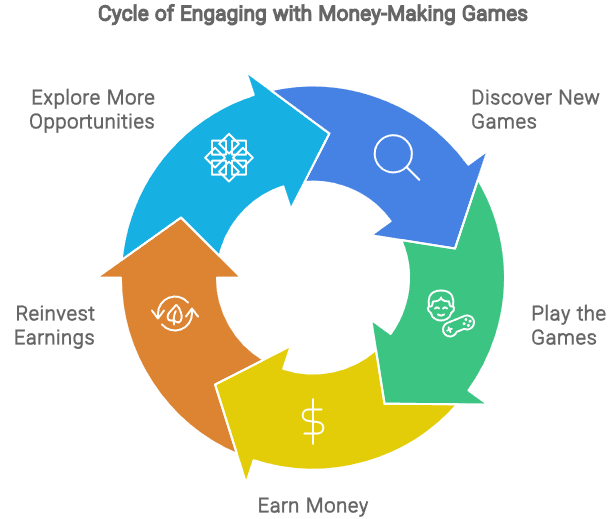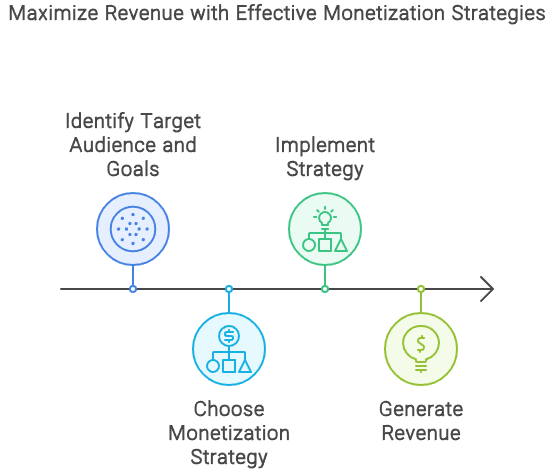Top Gaming Companies
The gaming industry is booming, and understanding the key players can help you navigate the landscape of the best games for making money. This section will explore the industry leaders and their global presence.

Industry Leaders
As of 2024, the largest video game companies by revenue are Sony Interactive Entertainment, Tencent, and Microsoft Gaming. These companies dominate the market, offering a range of popular titles that generate significant income through various monetization strategies.
| Company | Revenue (Billion USD) | Notable Games |
|---|---|---|
| Sony Interactive Entertainment | 23.6 | PlayStation exclusives, God of War |
| Tencent | 21.0 | Honor of Kings, PUBG Mobile |
| Microsoft Gaming | 8.8 (pre-acquisition) | Xbox titles, Minecraft |
| Activision Blizzard | 8.8 | Call of Duty, World of Warcraft |
For further insight into potential game investment opportunities, these companies represent a solid starting point.
Global Presence
The gaming market is not limited to a single region. Among the 50 largest video game companies, a diverse range of countries is represented. Thirteen are based in the United States, ten in Japan, and several others are located in South Korea, China, France, and Sweden.
| Country | Number of Companies |
|---|---|
| United States | 13 |
| Japan | 10 |
| South Korea | 6 |
| China | 6 |
| France | 4 |
| Sweden | 4 |
| Other Countries | 7 |
This global reach highlights the extensive opportunities available in the gaming industry. Understanding the virtual economy in gaming can provide you with insights into how these companies generate revenue and what trends are emerging in the marketplace. For more on monetization, explore our article on game monetization techniques.
Revenue Models in Gaming

Understanding the various revenue models in gaming is crucial for anyone interested in the best games for making money. Each model offers different methods for developers to earn revenue while providing players with enjoyable experiences. Here are the primary revenue models used in the gaming industry today.
Premium Games
Premium games require players to pay an upfront cost to purchase the game, either in physical or digital formats. This model does not include in-game purchases. Developers must invest in substantial marketing efforts to encourage players to buy their games (GDevelop). The appeal of premium games lies in their polished content and the absence of additional costs after purchase.
| Game Type | Price Range |
|---|---|
| Console Games | $40 – $70 |
| PC Games | $20 – $60 |
| Mobile Games | $5 – $20 |
The premium model has its advantages, such as predictable revenue and a loyal customer base, but it can be challenging to compete in a market increasingly dominated by free-to-play titles.
In-App Purchases
In-app purchases (IAPs) are a highly popular revenue model, especially in mobile gaming. Here, the base game is free to download, but players can buy in-game items, features, or upgrades using real money. This model has transformed the mobile gaming landscape, accounting for more than half of all mobile game revenue (SDLC Corp).
When implementing in-app purchases, it’s recommended to focus on items that do not disrupt the game’s balance, ensuring a fair experience for all players (GDevelop).
| IAP Type | Common Price Range |
|---|---|
| Skins and Customizations | $0.99 – $9.99 |
| Power-ups | $0.99 – $29.99 |
| Subscription Services | $4.99 – $14.99/month |
The success of IAPs has led to the rise of “whales,” a term used for the small percentage of players who make high-value purchases, significantly boosting a game’s revenue (SDLC Corp).
In-Game Ads
In-game advertisements are another effective revenue model, where players see ads during gameplay. Developers earn money each time a player views an ad. This model is flexible, allowing for various ad placements, such as banners or video ads, and it can provide long-term revenue potential. However, success in this area typically requires a large user base to generate significant income (GDevelop).
| Ad Type | Revenue Potential |
|---|---|
| Banner Ads | Low per view |
| Interstitial Ads | Moderate per view |
| Video Ads | Higher per view |
In-game ads can complement other revenue models, providing developers with a diversified income stream. Balancing player experience with ad placements is essential to avoid disrupting gameplay.
By understanding these revenue models, you can explore the best games for making money while appreciating the diverse strategies developers implement to succeed in the gaming market. For further insights on game monetization, check out our articles on game monetization techniques and game investment opportunities.
Strategies for Monetization

In the ever-evolving gaming industry, there are numerous strategies you can employ to monetize your creations effectively. Below are some key methods for generating income in gaming.
Creating On-Demand Games
One lucrative strategy is to develop on-demand games for clients. This involves creating custom games tailored to specific needs or preferences of clients, which can include businesses looking to engage their customers through gamification. By offering personalized gaming experiences, you can tap into a niche market that values unique content. This approach not only establishes you as a versatile developer but also opens avenues for ongoing contracts and repeat business. For additional insights, check out our article on game monetization techniques.
Licensing Games
Licensing your games is another effective method for generating revenue. By granting rights to other companies to distribute or adapt your game, you can earn money without the need to manage the game post-launch. This strategy allows you to reach broader audiences and markets, maximizing the potential of your game. Licensing can take various forms, such as publishing agreements or merchandise rights. With the right licensing deals, your game can earn money long after its initial release. For tips on investment opportunities in gaming, explore our page on game investment opportunities.
Selling Templates and Assets
Selling game templates and assets on digital platforms is an excellent way to monetize your skills. Developers can create and sell graphics, sound effects, music, and even complete game frameworks to fellow creators. This not only allows you to generate passive income but also helps foster a community of developers who rely on your quality content. As the demand for unique assets continues to grow, this strategy can be particularly profitable. Check out our article on the virtual economy in gaming for more on how digital assets are reshaping the industry.
| Strategy | Description | Potential Revenue |
|---|---|---|
| Creating On-Demand Games | Develop custom games for clients | Varies based on contracts |
| Licensing Games | Grant rights to distribute or adapt games | Royalties from licensing deals |
| Selling Templates and Assets | Offer graphics, sound, and game frameworks | Passive income through sales |
By employing these monetization strategies, you can navigate the gaming landscape effectively and maximize your earnings. Whether you choose to create on-demand games, license your creations, or sell digital assets, each approach offers unique benefits that can contribute to your success in the gaming industry.
Future Trends in Gaming
As you explore the landscape of gaming, recognizing the trends shaping the industry is essential for identifying the best games for making money. Here, we delve into three significant trends: cloud gaming services, remakes and reboots, and innovations in monetization.
Cloud Gaming Services
Cloud gaming services have transformed how you access and play games. Over the past five years, searches for cloud gaming have surged by 975%, with approximately 295 million users worldwide (Exploding Topics). This technology allows you to stream games in real-time, eliminating the need for long downloads and expensive hardware upgrades.
| Benefit | Description |
|---|---|
| Accessibility | Play high-quality games on various devices without the need for powerful hardware. |
| Instant Play | Start playing instantly without waiting for downloads or installations. |
| Cost-Effective | Reduce expenses on gaming consoles and PCs, making gaming more affordable. |
Cloud gaming is paving the way for new monetization strategies, including subscription models that offer access to a library of games for a flat fee.
Remakes and Reboots
The gaming industry is increasingly leaning towards remakes and reboots of popular franchises. Titles like the Final Fantasy VII remake have sold over 7 million copies, and remakes of Resident Evil 2 and 3 have also performed exceptionally well (Exploding Topics). This trend taps into nostalgia while attracting new players, making it a lucrative opportunity.
| Game Title | Sales (in millions) |
|---|---|
| Final Fantasy VII Remake | 7 |
| Resident Evil 2 Remake | 8.3 |
| Resident Evil 3 Remake | 3.9 |
As classic franchises like Silent Hill and Metal Gear Solid are expected to receive similar treatment, the potential for earnings through these titles can be significant.
Innovations in Monetization
Innovative monetization strategies are critical for increasing Average Revenue Per User (ARPU). Publishers should consider hybrid models that combine direct player purchases with advertising revenue to enhance player experience and retention (PwC).
Emerging trends include:
- Subscription Models: Offering players access to a range of games for a monthly fee.
- In-App Purchases: Enhancing player engagement through microtransactions.
- Blockchain Technology: Providing new opportunities for ownership and trade of in-game assets.
By adapting to these trends, you can better position yourself in the gaming market, whether through investment opportunities or by developing games that resonate with players. For more insights on monetization, explore our article on game monetization techniques and discover the potential of the virtual economy in gaming.

